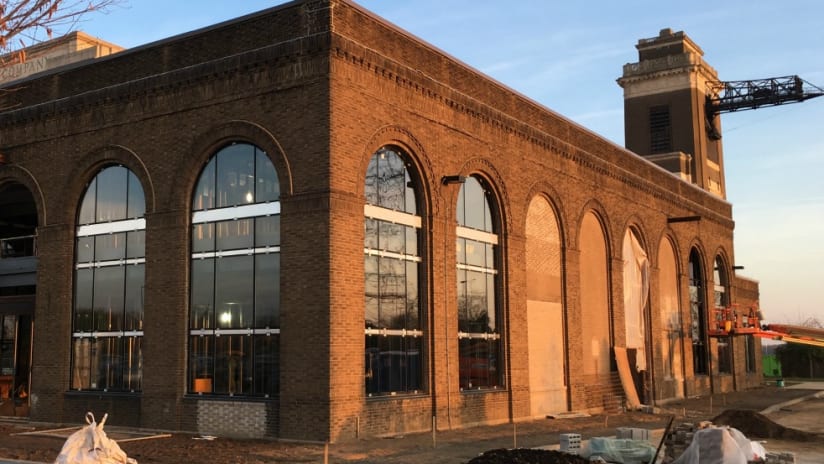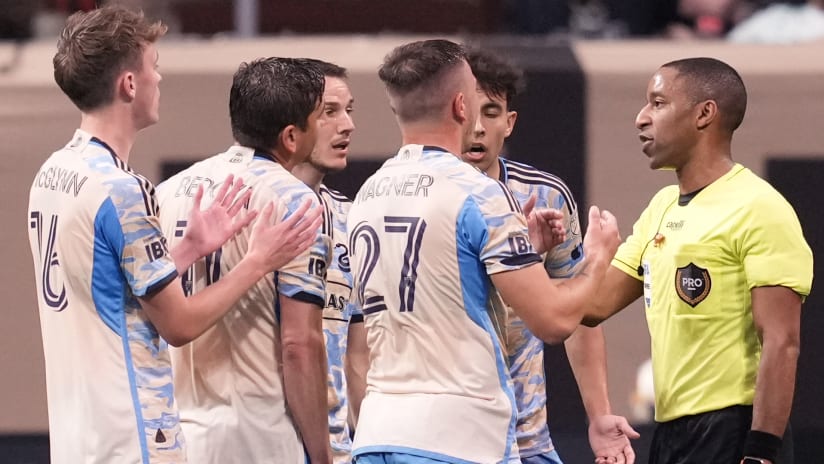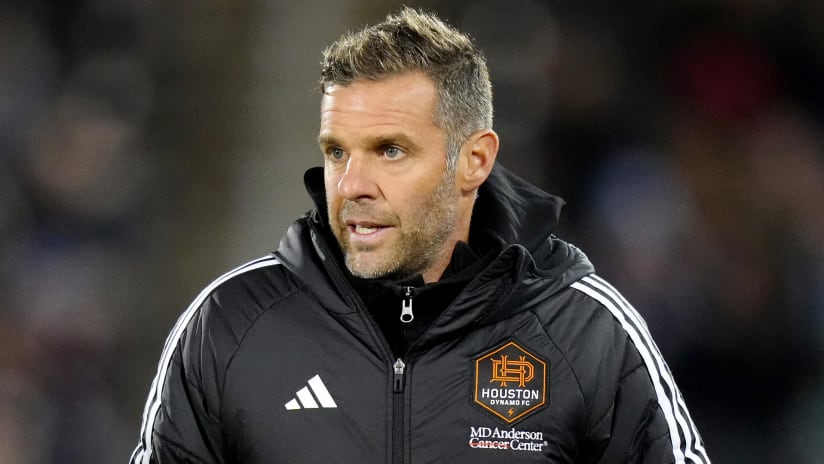CHESTER, Pa. – Shortly after sitting down in the Talen Energy Stadium media room for a press conference Thursday, Philadelphia Union owner Jay Sugarman and freshly minted sporting director Earnie Stewart stepped outside and put on their hard hats.
It was time to take a tour of the construction site that will soon be home to a new, state-of-the-art training complex for the club. Along with Stewart's hiring, it's one of the biggest reasons why Sugarman is confident the franchise is about to embark on a "new chapter."
“I think players are going to walk in next year and say, ‘This is the place I want to play,’” Sugarman said. “As you know, two years ago, we were playing in a public park. What great player is going to say, ‘That’s where I want to go?’”
The Union have certainly come a long way from their days taking buses over to Chester Park for training. Last year the club turned one of its stadium parking lots into two new training fields.
This spring, they’re slated to open a new, 16,000-square-foot, two-story complex. It will include, among other things, a 3000-square-foot weight room, a film room with stadium seating for 33 people, a physical therapy area and health center, a locker room, a players’ lounge, a café, and finally, offices and conference rooms for Stewart and the coaches that will overlook the training fields.
The Union owner said he believes the facility will help improve the club’s sports performance and, he hopes, eliminate some of the preventive soft-tissue injuries that plagued the team last season.
“We had a bunch of high-priced players that didn’t play much last year,” said Sugarman, adding that the cost of the complex and training fields is north of $10 million. “We didn’t have the depth to overcome losing Mo [Edu], losing Vincent [Nogueira], losing Fernando [Aristeguieta]. We need to be one of the top teams in keeping our players on the field. We think we’ve got some incredible resources that really haven’t been integrated into the process. Now we have this new sports department, we have these new facilities to develop players to their full potential. I think that is different. We have not had that place until now.”
For Stewart, anything that can help with player development is a plus. The former AZ Alkmaar director of football affairs said that infrastructure and facilities are often vital in helping a player “from a soccer standpoint, a lifestyle standpoint and a physical standpoint.”
“As long as you’re paying dollars, it’s a shame to have dollars sitting on the bleachers and not on the field,” Stewart told MLSsoccer.com. “If you can minimize that as much as possible, that’s good.”
The Union are constructing the new training facility in an old building next to the team’s corporate headquarters, inside the stadium complex. When construction began, Sugarman said they found coal cars from the turn of the 20th century in what used to be the support and maintenance building for the neighboring power plant. (That was renovated and turned into the Wharf at Riverton mixed-use office and retail complex by the Buccini/Pollin group, who own a stake of the Union.)
- Get more Union news at PhiladelphiaUnion.com
According to Sugarman, the Union ownership group has been trying to figure out how to “activate this space” for the last five years and initially considered moving the front-office headquarters from the Wharf into the smaller, neighboring building. But about a year ago, they decided it would work well as a training complex, where Union players and coaches can spend their time before and after training.
Meanwhile, the coaches’ offices inside Talen Energy Stadium (formerly known as PPL Park) will likely be used by the staff of the Bethlehem Steel, the Union’s new USL affiliate. But Sugarman said that the new training complex will be the prime location for the Union first team, the USL club and youth academy coaches to come together and work as one.
“There are a lot of collaborative spaces in here where people will just sit and go, ‘What do you know? What do I know? What can we share? What can we do better?’” Sugarman said. “We didn’t have that when they were all over the place.”














